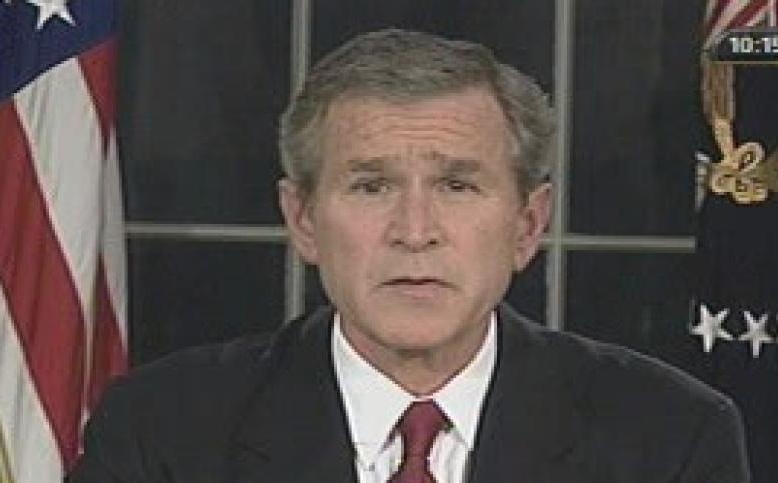George W. Bush announces the start of the Iraq War, March 19, 2003
Originally written for the Social Sciences Birmingham Forum:
The accusations of “fake news” against and from Donald Trump have dominated global headlines since his inauguration three years ago. Trump’s use of “fake news” began early in his administration and has been maintained as a crucial part of his rhetoric.
The infamous claim in January 2017 from Press Secretary Sean Spicer that the crowd for Trump’s inauguration was the “largest in history – period”, set the tone. Now the term is synonymous with the Administration, deployed to reject critiques of Trump policy and unhelpful information.
But Trump is not the first to deploy “fake news” in the White House. The blatancy of some of his claims may shock, but his predecessor George Bush’s use of “fake news” arguably achieved more in terms of policy – a good example being preparation of the ground for the invasion of Iraq in March 2003. This was the true ground-breaking administration, using “fake news” to make a case for war and going farther than the current President.
A numbers of Bush Administration officials were members of the 1990s think tank “Project for a New American Century”. This group advocated strongly for military intervention abroad. Some of its leaders would become media commentators well-disposed to the Bush Administration, such as Richard Perle. Others took up senior role, including Vice President Dick Cheney, Undersecretary of Defense Paul Wolfowitz, and Undersecretary of Defense Douglas Feith.
These men established an intelligence analysis unit that re-examined intelligence discounted by the CIA, looking for a connection between Iraq and Al Qa’eda even if much of the information was questionable and unreliable. This was allied with a media campaign of maintaining the link between Saddam Hussein and Osama bin Laden, in spite of CIA reports to the contrary. Outside the Administration, Perle was a frequent contributor to TV debates over the direction the “War on Terror” should take after the invasion of Afghanistan in October 2001.
This campaign was conducted in a very different media atmosphere than that for Trump’s “fake news” strategy. Trump receives far greater criticism for his use of “fake news” because people can often see that his claims are false, as when photographs belied his claim of the biggest inauguration crowd in history. The Bush Administration operated with a veil over their “fake news” on intelligence: as the government, they were the only ones with full access to the material that they were using as the basis for their claims.
Trump may seem revolutionary and ground-breaking in his use of “fake news”, both as an accusation against others and as a strategy of his own. But he is only distinctive in how blatant he is. The Bush Administration was far more effective than Trump because so few people were aware that this was, indeed, “fake news”.

